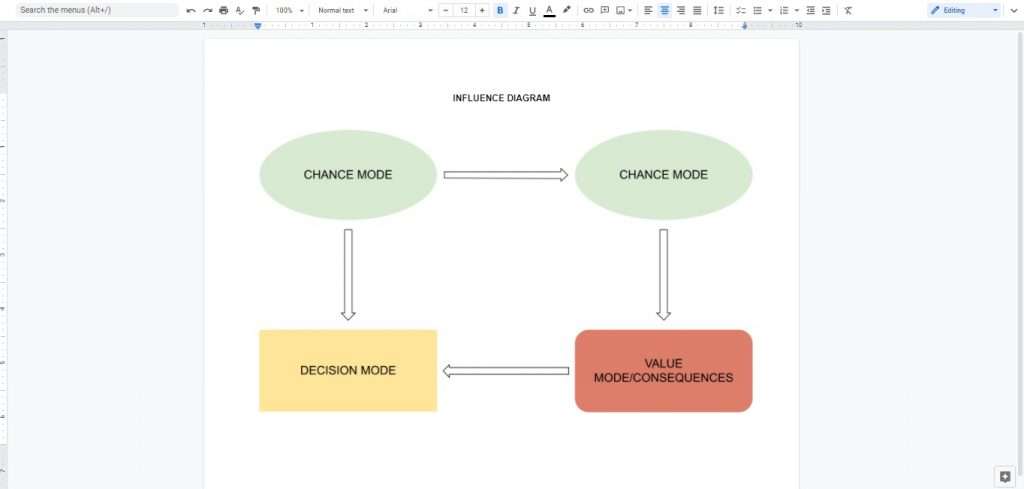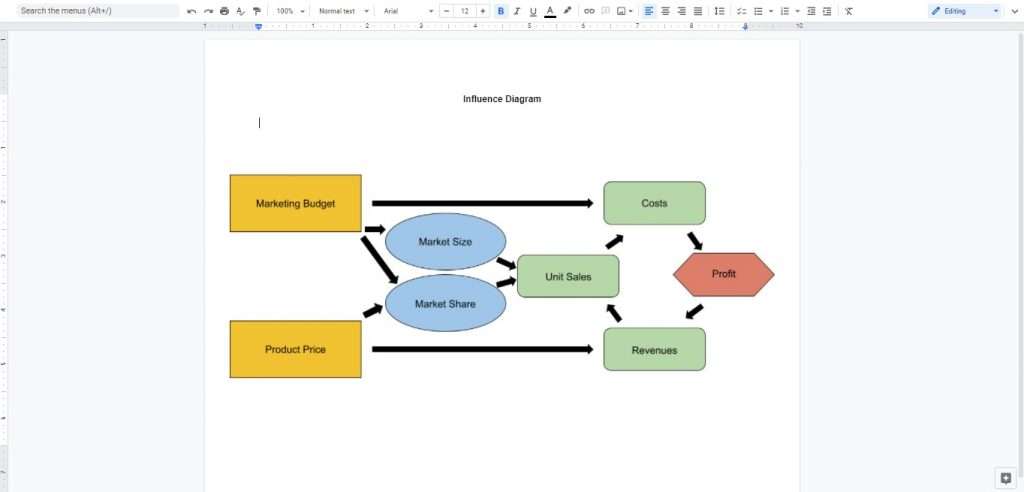The influence diagram is a data visualization technique that graphically shows the relationship between variables. The influence model can help you analyze your data to identify meaningful relationships among variables, or it can be used as an exploratory tool for understanding how one variable influences another.
These diagrams provide a visual representation of the relationships between multiple quantitative and categorical variables. They can help you understand complex scenarios by presenting results in an intuitive format that makes it easy for anyone from a non-technical background to a data analysis professional to understand.
Project managers and data scientists are typically responsible for creating These diagrams, while business analysts focus on interpreting the results. For example, if you want to understand how different factors might affect your customers’ purchasing behavior, a data scientist would be responsible for building an influence model. This blog post will introduce the concept of an Influence Diagram and then show you some examples of how they are created in.
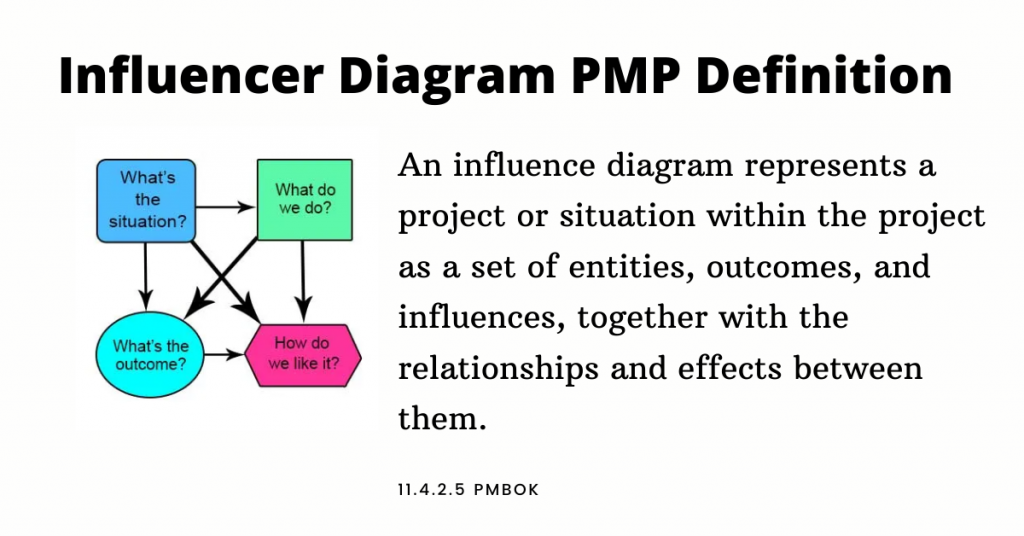
Influence Diagram PMP
An influence diagram represents a project or situation within the project as a set of entities, outcomes, and influences, together with the relationships and effects between them. Where an element in the influence diagram is uncertain as a result of the existence of individual project risks or other sources of uncertainty, this can be represented in the influence diagram using ranges or probability distributions. The influence diagram is then evaluated using a simulation technique, such as Monte Carlo analysis, to indicate which elements have the greatest influence on key outcomes. Outputs from an influence diagram are similar to other quantitative risk analysis methods, including S-curves and tornado diagrams.
11.4.2.5 PMBOK
How to create an influence diagram
When creating this diagram, the decision is represented by a rectangle, with the name of that variable written inside. The objective is represented by an oval with the name of that variable written inside.
The chance or independent variables are represented by hexagons, while functions for these variables are rounded triangles. These two elements are connected to the rectangle and oval, with directional lines showing how they influence those elements.
For example, we have a simple scenario where the aim is to predict whether an individual will purchase a product from a brand being advertised online on a social network. We have two variables: the price of a product and the number of likes received on social media for this product. The objective is to build a model that can accurately predict whether a given individual will buy this product or not.
We have to understand the factors that influence this decision. We have three variables in total: price, number of likes and Buy. These are represented in the model by a rectangle, an oval and hexagon symbols, respectively. The relationship between these elements is shown using directional lines with connectors at each end.
The strength of the line connection determines if the influence flows in one direction or is reciprocal. You can use a heavy line for this purpose. The half arrow end of the directional line indicates that an element influences another in only one way. Conversely, when you see a full arrow on a directional line, it means the variable influences another in both directions (i.e., there is reciprocity between the variables). The following figure shows how each element is connected when building this diagram.
Note that in some models, there are elements that you do not want to include in your model due to their lack of importance for making a decision. These are called exogenous variables.
Exogenous variables may be outside the model entirely or represented by a function that has zero impact on the decision, such as a constant. In this example, we don’t care about the product’s price when determining whether an individual will buy it or not. As such, we can create a constant for our objective (represented by an oval) to represent this relationship.
Simple Influence Diagram Template Google Docs
Online Tools to Create an Influence Diagram Templates
Influence representations are visual representations of the different factors that might affect a decision. They make it easier to understand complex situations by showing how different elements affect one another.
An influence model is a business tool that allows the analyst to see the different relationships between positive, negative or neutral factors, which can influence a specific decision. These relationships help explain why an outcome is more or less likely to happen, depending on the values taken by the different input variables.
It differs from a decision tree because it allows you to represent and understand relationships between factors and not only the outcome (decision). It also provides information on how these will affect outcomes, and aggregated data can be represented in influence diagrams.
Influence models are used to create visual models representing the relationships between different factors influencing a specific outcome. They can be used to answer questions such as ‘what if’ scenarios, helping individuals understand how changing certain variables will affect other factors/elements and the outcome. Influence models help not only with decision making but also with strategy formulation by providing an understanding of the different factors that influence a decision.
Lucidchart
Lucidchart – Requires signup to edit the influence diagram template for free.
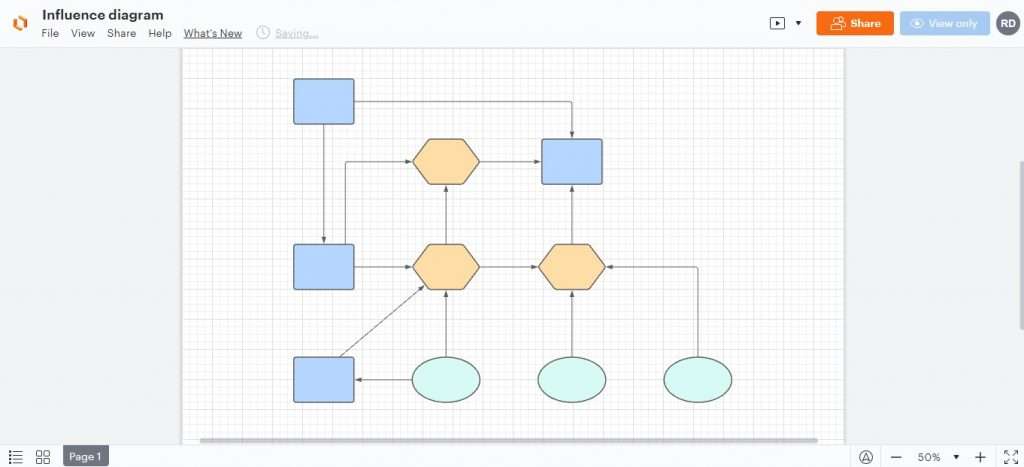
Creately
Creately – This also requires signup to edit the influence diagram template for free.
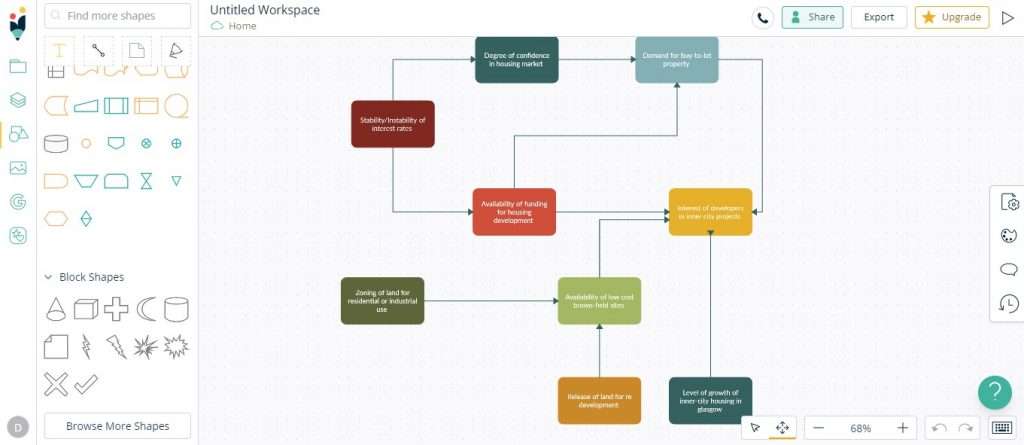
Visual Paradigm
Visual Paradigm – Can edit straightaway for free with no signup required.
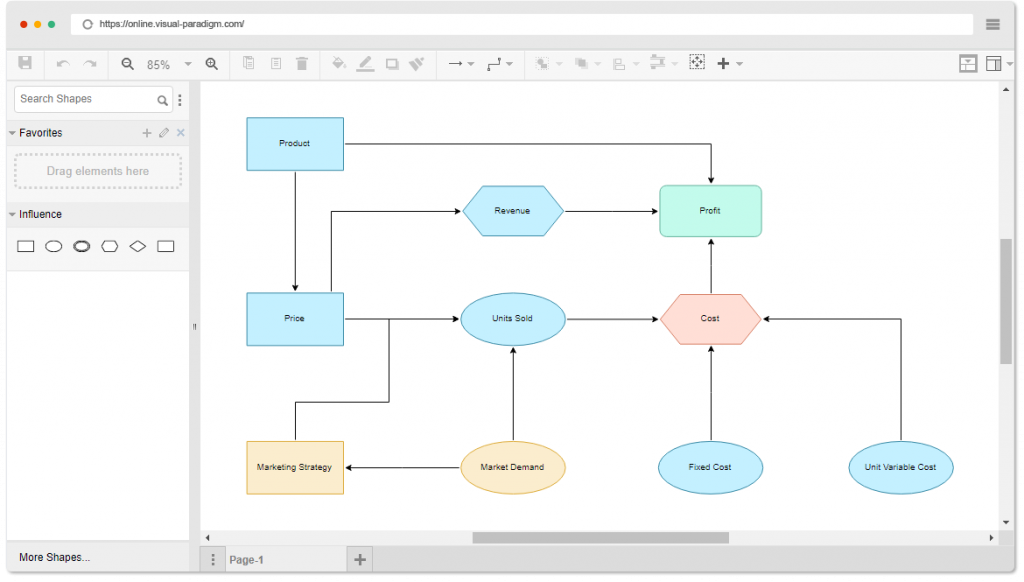
Smartdraw
Smartdraw – Requires signup to use the influence diagram templates for free.
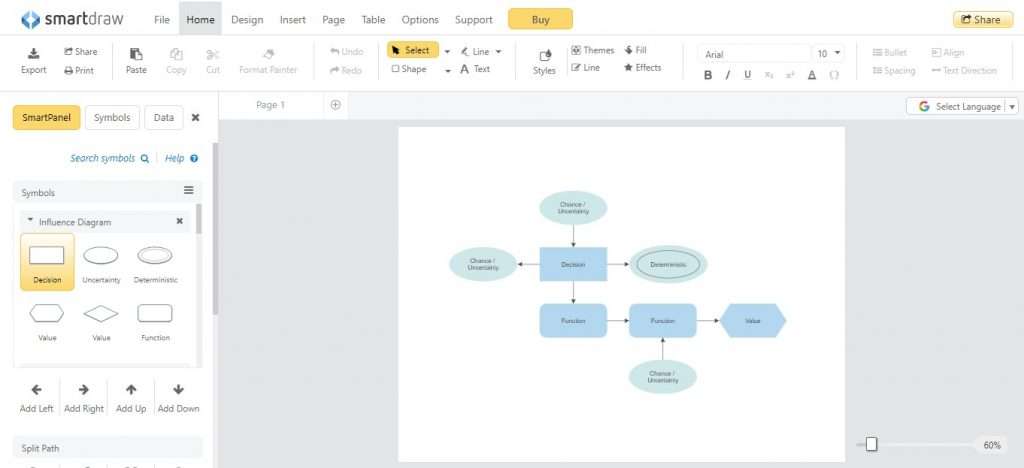
Miro
Miro – Like most of the online tools mentioned above, this requires signup to use the influence diagram template for free.
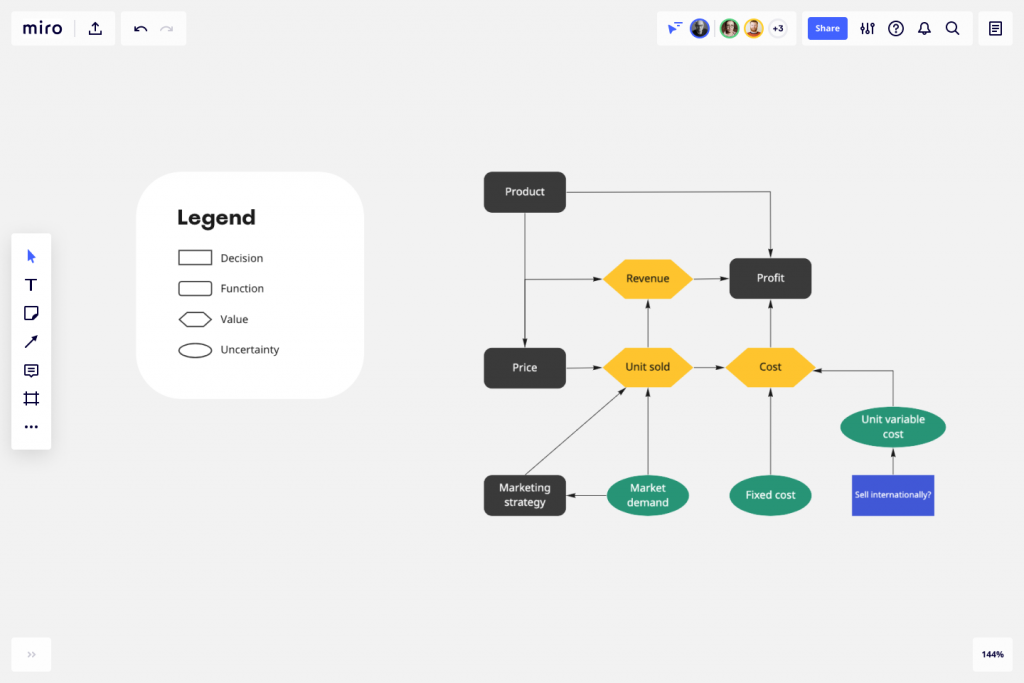
FAQs
What is the use of an influence model/diagram?
This is a visual representation of the different factors that might affect a decision. Therefore, it makes it easier to understand complex situations as you can see which elements influence other aspects of the model.
How do you create an influence model/diagram?
You start by creating your model to add your independent, objective, and function variables. Then you connect the variables with directional lines, trying to understand how they influence one another. Finally, you give each of these connections a name and add annotations so that it is easier for others to interpret the model.
What is an influence model/diagram in project management?
When we decide, we consider the objective or single variable that we want to obtain (e.g., maximizing net income) and all the other factors and elements present around us (e.g., competitors prices, salaries, e.t.c.). This diagram makes it easier for those involved in making this decision to see how different elements are related, thus helping to make better decisions.
What is an influence diagram in business analytics?
This diagram represents the relationships between different variables to correctly understand their effects on a specific decision and how they can be used to maximize or minimize an objective. These diagrams are visual models that use shapes and arrows to represent each variable.
Choosing Influence Diagram vs. Decision Tree
This diagram is a type of decision tree. They are used to visualize the relationships between variables that influence a specific decision. Decision trees help predict an outcome, given the values of certain variables.
Decision trees provide more information than influence diagrams because they use numerical data to determine which variable significantly impacts the final result. Therefore, business analysts need to know when to use a decision tree and an influence presentation.
Both tools allow you to identify the variables that directly or indirectly influence a specific outcome. However, there are differences between them. An influence model is ideal for business problems where identifying ‘if’ questions, i.e. if the price of a product increases, will this affect sales?
A decision tree is ideal for business problems where identifying ‘how much’ questions, i.e., by how much would sales decrease if the price of a product increased?
In some scenarios, both influence models and decision trees can be used as analysis tools. In practice, an influence model is more appropriate for identifying cause and effect relationships, whereas a decision tree is ideal for making predictions (i.e., if this happens, then that will happen).

